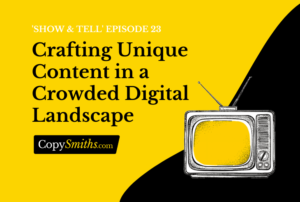Home » Content Marketing » 3 Reasons Why You Need to Create Content at Scale in 2022

3 Reasons Why You Need to Create Content at Scale in 2022
In 2022, having a high-quality digital product or service is not enough.
The previous year was marked by a dramatic shift from a brick and mortar to a click and mortar business model.
To survive, companies have had to either optimize their systems for remote work or introduce online-based services.
With new online businesses turning up left and right, it is currently more difficult than ever to stand out and rank high on Google.
As a result, businesses have been competing for customers’ attention by employing and experimenting with a variety of digital content marketing strategies.
One marketing technique that has helped businesses find their target audience or significantly increase the number of web visitors is content scaling.
By creating and publishing a lot of content in a short amount of time, it is possible to reach more consumers as well as keep current customers loyal to the brand.
Consistent online presence is what separates successful businesses from the rest.
Reasons to Create Content at Scale
Content scaling is a straightforward and easy content strategy – at least in theory.
For turning this into a successful marketing strategy, it’s necessary to have a carefully constructed plan as well as time to produce massive amounts of content.
Since that involves sharing on a daily basis while keeping high-quality content, it is notoriously difficult to implement.
Let’s dive into the three reasons why you should consider content creation at scale and explore what makes it tricky.
1. Using Content Marketing to Build Trust
Customers are creatures of habit. They have favourite brands as well as websites they deem reliable, regularly turn back to, and recommend to their friends or family.
If you are new in business or recently transferred your business into the digital realm, you want to become their go-to brand.
In case you already have an established business, you want to keep your loyal customers.
The keyword here is trust. But what does that mean for content, exactly?
Trust is built with consistency, which makes the regular output of content crucial for building relationships with clients.
The customers want to connect with your brand and support it, not be sold to.
While planning for the content at scale, it’s important to include diverse content that will be scattered over a variety of social media accounts and websites connected to your business.
This could mean daily sharing of a short video on your Instagram story or posting on your blog once a week.
Similar to keeping in contact with your friends, this content strategy is essentially letting your followers know what you’ve been up to.
Keep in mind that once you create one type of content, a video or a blog post, you can easily reuse the information to create even more content.
YouTube video can be accompanied by a blog post. The post can be followed with an infographic on your Facebook page.
Some prefer video, while others have only a couple of minutes to skim the articles for the information on a certain subject matter.
What Makes This Tricky?
- Sharing consistently leads to burnout and affects the quality of your content.
- Coming up with ideas, updating the content plan, and staying motivated to write a lot of articles/produce videos takes a lot of energy.
2. Content Production Makes Your Brand Recognizable
Creating content at scale can build, reaffirm, or rebrand the image of your business. It is the easiest way for you to control the narrative – the story you tell others about your company.
A strong brand voice also shows that you know who your clients are or who your service or product is for.
Consistent brand voice and scaled content is a straightforward way for them to get to know you.
Being mindful about the right places and frequency of content sharing is also important.
Let’s say your goals include reaching younger customers.
It’s necessary to create a marketing strategy for someone who is aware of the brand image which regularly informs their purchases.
They spend a lot of time on social media where they also follow their top favorite brands. Therefore, sharing new content via social media is the way to go.
We are constantly bombarded with information and for your content to stand out it has to be high quality, relevant, and tailored to your target audience.
No matter who your customers are, they value custom content produced for them specifically.
The content you scale should also be recognizable and make it easy for your target audience to connect with your overall brand image and identity.
Whether that is in the form of a video, blog post, or Instagram story, the voice of your brand and art as well as color schemes that accompany it should be a purposeful part of your content production.
Why is This Difficult?
- Creating great content for a specific demographic or client in mind requires a specific voice that speaks directly to the clients you want.
- Incorporating brand image has to become second nature during the content production process.
3. Content at Scale Keeps Businesses Relevant
The research confirms that creating and sharing popular content is crucial to ensure brand loyalty.
Trendy topics and hashtags show that businesses keep up with changing times and culture, but it’s also a chance to reach a wider audience.
The content you share is always read in a specific context. We are in tune with relevant cultural shifts and aware of social issues.
Therefore, we follow causes that are going to make our lives better in the future and will make the world a better place for generations to come.
This is why customers carefully choose who they purchase from.
Producing fresh and relevant content that communicates your business cares is important, but it has to be in sync with the values of your business.
Consumers want to know you care, but they will call you out if they notice that your message is not genuine.
For example, statements about environment preservation by fast fashion companies will soon be called out as greenwashing.
Therefore, keeping up with the trends and adjusting your content to trending hashtags is important, but should be done in a way that highlights the image of your business.
B2B marketers plan and scale the content upfront, based on a couple of strong core messages of your brand.
Use the trends to your advantage, but only if they make sense with your business.
Why is This Not Simple?
- The content and marketing strategy has to be true to your brand, evergreen, and provide value to your clients for years to come.
- Customers who follow brands on social media are looking for authenticity, something to connect to.
Is Scaling the Right Content Marketing Strategy for you?
Regardless of your company’s goals, creating quality content at scale is a valuable strategy for any company.
It has a key role in navigating your brand’s identity as well as reaffirming that your business is modern and in tune with current social events.
It shows that you recognize who your audience or customers are as well as that you will stay consistent and authentic as your brand evolves.
As mentioned, effective content production can be challenging – even to professional marketers and their teams.
The content has to be high-quality, smart, keep your voice, and be done with a clear goal in mind.
Writing content to show that you are a subject matter expert in your field is a good start.
Considering that it takes a lot of practice and time to write well, writing is one of the most commonly outsourced types of content at scale.
Creating a massive amount of written content is a challenge.
With a proven track record, content operations expertise, and dedicated team members consisting of writers and editors, they can ensure the voice of your company is heard.
Loud and clear.
CopySmiths
I'm Katrina McKinnon, founder of CopySmiths and Small Revolution. In my 20 years of experience, I have helped online businesses create high-performing content specifically on an eCommerce store's blog. Find me on LinkedIn and Twitter.

CopySmiths offers the best blog writing services for online stores.
If you'd like us to write blog articles for you, click here.
Most Recent
- 3 Bold Questions You Should Ask When Hiring A Content Writer

- 5 Practical Reasons You Should Use a Blog Post Template

- 4 Amazing Benefits of Using a Title Generator for New eCommerce Blogs

- 10 Awesome Bio Examples Your Online Store Blog Should Emulate

- 8 Basic Steps to Successful Content Development Every Time

Podcasts
Got a question?
Ask our friendly team about our article writing services.
Subscribe to CopyZine
Monthly, hand-picked stories of the best in eCommerce Content.




